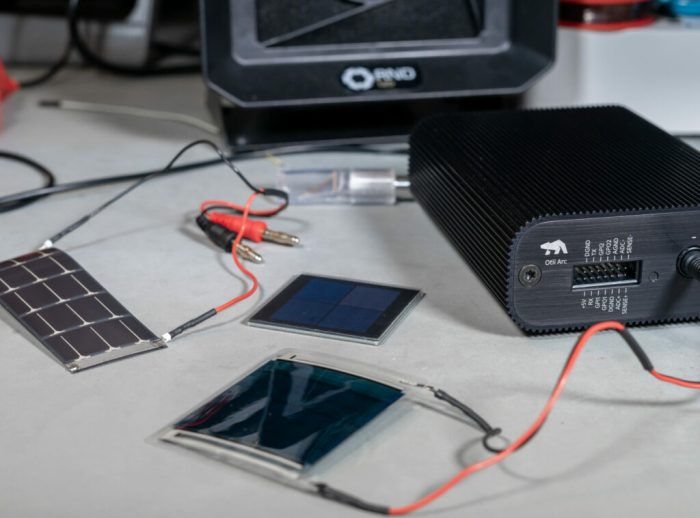IoT solar energy system stands at the intersection of innovation and sustainability, offering a transformative approach to harnessing solar power. This cutting-edge technology integrates the Internet of Things with solar energy systems, enabling smarter management and optimization of solar resources. From enhancing efficiency with real-time monitoring to facilitating cost-effective solutions, IoT solar energy systems are paving the way for a greener future.
By incorporating components such as solar panels, inverters, and various IoT devices like smart meters and weather stations, these systems create a network that can communicate and adapt to real-time conditions. This interconnectedness not only improves energy production but also contributes to significant savings and enhanced performance in solar energy management.
Definition and Components of IoT Solar Energy System
An IoT solar energy system integrates solar technology with Internet of Things (IoT) capabilities to enhance energy generation, management, and consumption. It plays a crucial role in the transition towards renewable energy sources by providing real-time data and analytics, which lead to improved efficiency and sustainability in energy use.
The main components of an IoT solar energy system include:
- Solar Panels: These are the primary devices that convert sunlight into electricity, utilizing photovoltaic technology.
- Inverters: Inverters convert the direct current (DC) generated by solar panels into alternating current (AC), which can be used by household appliances and fed into the grid.
- Sensors: Various sensors are used to monitor environmental parameters, such as temperature and sunlight intensity, ensuring optimal performance of the solar system.
Examples of IoT devices that can be integrated into solar energy systems include smart meters, which track energy consumption and production, and weather stations, which provide data to optimize energy generation based on changing environmental conditions.
Benefits of IoT Integration in Solar Energy
Incorporating IoT technology into solar energy systems offers significant advantages, predominantly in efficiency and monitoring. Real-time data collection allows for immediate adjustments to optimize performance, leading to enhanced energy outputs and reduced wastage.
The cost savings associated with IoT integration stem from:
- Enhanced predictive maintenance, reducing operational costs.
- Real-time analysis leading to better energy consumption patterns.
Case studies exemplifying successful IoT applications in solar energy include a project in California where smart meters reduced household energy consumption by 15%, demonstrating the potential for efficiency gains through real-time monitoring.
Challenges and Solutions in Implementing IoT Solar Energy Systems

While integrating IoT with solar energy presents numerous benefits, several challenges may arise, including connectivity issues and cybersecurity concerns that can impede system effectiveness.
Potential solutions to these challenges include:
- Improved Connectivity: Utilizing advanced communication technologies such as 5G to enhance data transmission reliability.
- Cybersecurity Measures: Implementing rigorous data encryption and regular system updates to safeguard against potential threats.
Comparing traditional solar energy systems with IoT-enabled systems reveals that the latter significantly improves operational efficiencies and data-driven decision-making processes.
Future Trends in IoT Solar Energy Systems

Emerging trends in IoT technology are set to impact the solar energy sector, with advancements in artificial intelligence and machine learning enhancing predictive analytics and operational efficiencies.
The role of big data in optimizing solar energy production and consumption cannot be overstated. By analyzing vast datasets, stakeholders can identify patterns and make informed decisions that improve energy management strategies.
A roadmap for future developments in IoT solar energy systems includes:
- Expanding the integration of AI for advanced predictive maintenance.
- Enhancing user interfaces for better consumer engagement and energy management.
Real-world Applications of IoT in Solar Energy
Numerous real-world applications of IoT in solar energy systems demonstrate the potential of this technology across diverse geographic regions. For instance, large-scale solar farms in Australia utilize IoT devices to monitor system performance and environmental conditions, significantly boosting their operational efficiencies.
Businesses are leveraging IoT solar energy systems to meet sustainability goals by reducing their carbon footprints and improving energy efficiency. Notable organizations actively using IoT technology in their solar energy systems include:
| Organization | Location | Impact Achieved |
|---|---|---|
| SolarCity | USA | Enhanced energy efficiency by integrating IoT monitoring systems. |
| Enel Green Power | Italy | Increased operational efficiency through real-time data analytics. |
Regulatory and Policy Considerations, IoT solar energy system
The deployment of IoT in solar energy systems is governed by various regulatory frameworks that can either support or hinder adoption. Policies encouraging renewable energy sources often facilitate the integration of IoT technology, while stringent regulations may pose challenges.
Countries worldwide are responding to the integration of IoT in renewable energy sectors through initiatives that promote innovation and investment. For example, Germany’s Renewable Energy Sources Act has provisions that encourage the adoption of IoT technologies alongside solar energy systems, indicating a growing trend towards embracing digital solutions in energy management.
Ending Remarks

In conclusion, the integration of IoT in solar energy systems represents a significant leap toward optimizing renewable energy usage. As we navigate the challenges and explore future trends, it’s clear that IoT solar energy systems will play a crucial role in achieving sustainability goals worldwide. With continuous advancements in technology and regulatory frameworks supporting these initiatives, the future indeed looks bright for IoT-enabled solar solutions.
